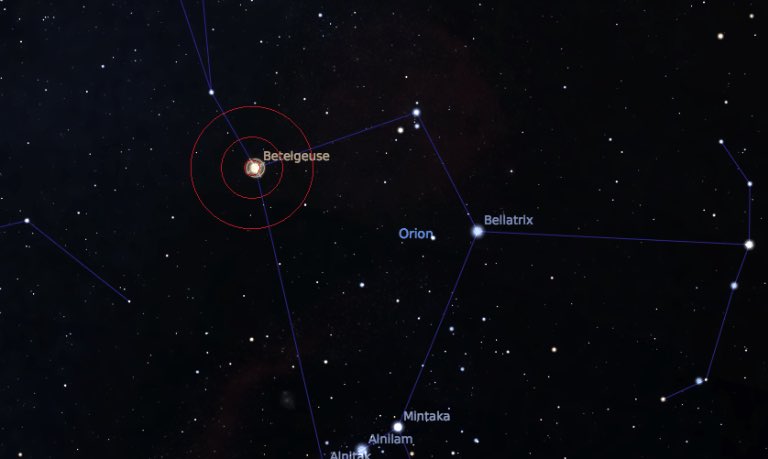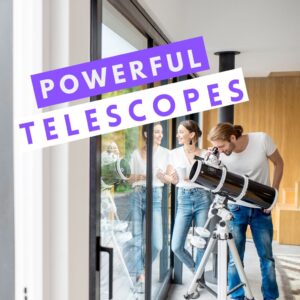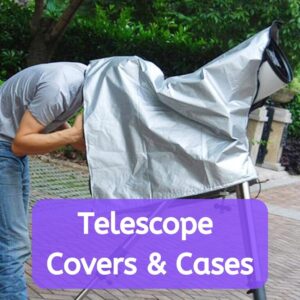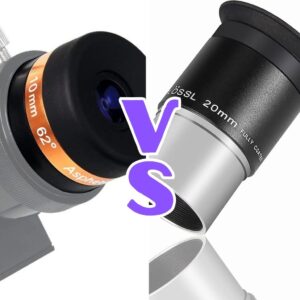This site contains affiliate links to products. I may receive a commission for purchases made through these links.
You may have noticed a huge boxy thing on top of some telescopes, and these boxes are called Telrad Reflex Sight Findersopes. They have a specific purpose in astronomy when using a telescope. They were designed in the 1970s, and they have not changed since.
Telrad reflex finder scope is a simple tool for telescopes, and it works like your standard right angle(RA) finderscopes or red dot finder to help you find objects in the night sky with your telescope.
How does Telrad finder works

Telrad finder scope is using technology from the 1970s used in WW2 for deploying bombs. It is powered by two AA batteries. Inside there is the 3 ringed bullseye illuminated by a red LED, beaming it to a mirror that projects the circles on the 45° angled glass. It has zero magnification so that you can see a big chunk of the sky through it.
Because of the broad field of view, it is recommended to use it with telescopes that have a shorter focal length or low magnification. With longer focal lengths and high magnification, the Telrad is not very accurate.
It has only one switch on the side to turn on the red rings and to control the brightness of the LED. Also, three adjustment knobs on the back are used to calibrate the bullseye when aligning the Telrad with the telescope.
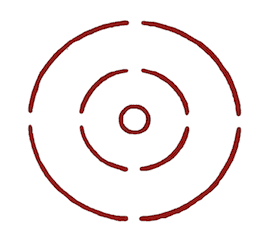
The circles are spaced to help you navigate the night sky. When you look through it, you see the red rings, they cover a diameter of 0.5, 2, and 4 degrees in the sky. It is very helpful for locating objects that are not visible to the naked eye due to light pollution. When you know how many degrees away they are from the bright star, you can easily point the telescope to the right spot and see the object through the eyepiece of the telescope.
Star hopping with Telrad reflex sight
Because of the spaced rings, the Telrad is a perfect tool for star hopping. Star hopping is a technique used by amateur astronomers to find objects in the night sky when working with a manual telescope mount.
When you have a telescope with GoTo motorized mount, it is easy to point the telescope to an object that you can’t see with the naked eye because the motorized mount knows where it is. When you have a manual mount, you have to do it yourself.
But to find an object invisible to the eye, for example in the city is hard, and you have to use star hopping. I will not go into the details; you can find a detailed guide to star-hopping here.
But it is a simple process of using star charts and “hopping” from one bright visible star formation to another until you reach the desired object. That’s why the Telrad finderscope is perfect for star hopping because it will give you the exact degrees of reading on the night sky. The night is not flipped upside down like in the RA finderscope, and it has a big field of view.
How to mount a Telrad finder
Mounting a Telrad is a bit different from a standard RA finderscope. It is not using a dovetail. It comes in two parts—a mounting base bracket with adhesive tape on it and the Telrad body.
You have to stick the base onto the telescope and then mount the Telrad on it. There is a very informative image guide on how to do it, and you can check it here.
What I would recommend is to mount it more in the middle of your telescope for more convenient use and also for balancing purposes. But keep in mind that once you stick the Telrad base to the telescope, it is a tricky job to remove it.
How to calibrate and align Telrad finder
The first part to properly align the Telrad is to stick the base properly on the telescope, which you can see in the guide I linked above. Then the process is the same as with your standard RA finderscope.
Point your telescope towards a static object during the day. Make sure the object is in the center of the field of view in your eyepiece. Turn on the Telrad LED ring and use three adjustment knobs at the back to move the ring, so the object is in the center of the ring.
Test it by using the Telrad ring and point it to another object and then check if the object is in the center of the eyepiece of your telescope.
Telrad vs. red dot finder
The main difference between the Telrad and the Red Dot Finder is that the Red Dot Finder is projecting only a red dot on the glass of the scope, and the Telrad is projecting concentric rings, so it has more advanced use.
Red dot finder is found mostly on low-cost telescopes. But what they have in common is that they have no magnification.
Telrad vs. RA finderscope
Telrad and RA finder scopes are entirely different instruments. RA finderscope is basically a small telescope that has some magnification and hence a smaller field of view. They usually have a reticle inside to help you point and center the object.
And Telrad, as we talked about in the article, has concentric rings and no magnification with a large field of view. We can’t say that one is better than the other because each instrument is better in a different situation.
The best practice is to have both mounted on your telescope, and you will have a killer combo for stargazing.
Recommended accessories
The Telrad finder scope will come with everything you need to start using it out of the box. But I recommend getting the “riser” for it. It is just a piece of plastic that goes between the base and the Telrad body. It will lift the Telrad higher, which will give you a more convenient position to look through it. It has almost no weight, so don’t worry about it.
You can also get a dew shield for your Telrad to keep out the condensation of the glass, but it will work fine without that too.
You may also like: Can I Use My Telescope Through a Window?
Conclusion
Telrad finder scope is a simple and handy accessory for your telescope. It is not expensive, and it will help you when you are doing the star-hopping when locating objects in the sky.
However, it will require you to know how to read the star charts and apply them to star hopping, so I do not recommend it for complete beginners in astronomy.
Read also:

